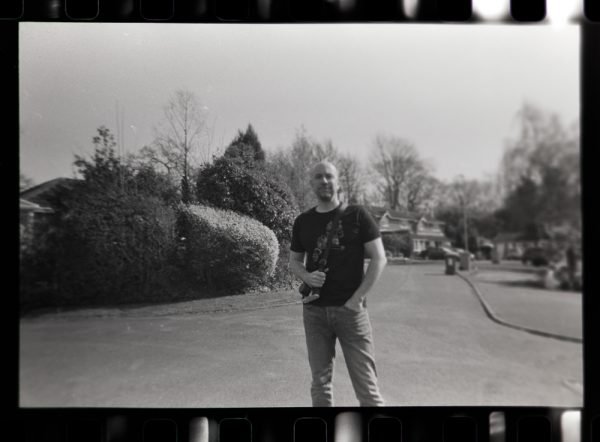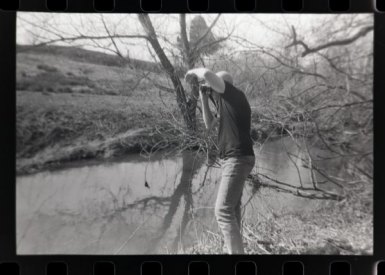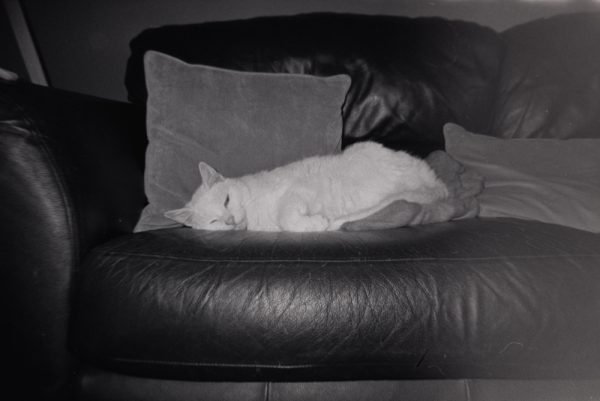Self Isolation Project - teaching children to shoot & process b&w film
A mix of Art and Science
As I write this, the UK and many other parts of the world are currently in lockdown thanks to the COVID-19 coronavirus. This pandemic has meant the unprecedented closure of schools and the daunting prospect of homeschooling our children – in my case 10-year old twins.
Now, I’m not sure about other parents but I’m almost at the point where I can no longer blag my way through their homework. Rather than own up to this humiliating fact, I suggested I get them involved in a little photography project much more in my comfort zone. That is, they shoot a roll of black and white film and then process it themselves.
I figure film photography is a perfect mix of art and science but also something fun and practical we can do together that wouldn’t normally be covered on a primary school curriculum. A win-win for everyone!
All sounds simple, doesn’t it? But just to complicate it I decided to film it (as best I can using only my phone) for ILFORD Photo’s Instagram stories. As my son’s only career aspiration is to be a YouTuber (and my daughter is too shy), he was my natural choice to ‘volunteer’ for this.
You can see the full video below or read on for a short (honest) diary of what went right (and wrong) - think of it as foresight in case you want to try this with your own children.
Self isolation project - teaching young children to process film
Day 1 – Loading and shooting the film
I decided to split the process over a few days so as not to interrupt the lessons provided by his school. Day 1 was loading the camera and shooting. I have several cameras, but I’m still not quite ready to let my son loose with one of them, so I bought a HARMAN Reusable Camera which comes with two rolls of Kentmere Pan 400 film.
Loading it is very simple, and so the first challenge was tackled with no hiccups. At the time, the UK was enjoying an unseasonably nice spell of sunshine, and he was able to capture some shots in the garden as well as in the house using the camera’s built-in flash.
From the tired old cat to the washing hanging on the line, to a selfie with his blurred face no doubt filling the negative, he was quickly blasting through his 36 frames!
We finished off the roll by walking to a nearby river as part of our allotted daily exercise (maintaining safe, social-distancing) which gave us a change of scenery and gave the cat a break. So far, so good!
That was until we returned home. Having finished the roll, he opened the back of the camera to take it out without having first rewound the film. Of course, he wouldn’t have known any different and not a complete loss but something I’d failed to make clear!
MoreDay 2 – Processing the film
This is the day that would really test our father-son relationship. Processing day!
To keep things simple, we used ILFORD’s SIMPLICITY chemicals (pre-measured developer, stop bath and fixer) and the Ars-Imago Lab-Box. Both are excellent options for beginners thanks to their ease of use.
Unfortunately, we didn’t get off to the best start. The only pair of protective gloves I had for him were far too big. Also, I had rewound the film completely into the cassette and didn’t have a film retriever. You need to clip the tail of the film onto the Lab-Box spiral, so the changing bag had to come out!
Onto mixing chems. Thanks to the Simplicity sachets, as you would imagine this was very easy. He only managed to miss the cylinder and pour developer everywhere once.
The processing was a bit more fraught as I was filming on my phone which was also our timer. We had a few spillages and our timings were all over the place but again we got there. Once we had washed the film, we were finally able to check how he had done.
This is where film photography really comes into its own. I’m not sure if it is the delayed gratification, the relief of knowing there are actually images on the negatives or just the joy of creating something tangible but I could hear the surprise and satisfaction in his voice knowing it had worked.
We hung the negs up to dry ready for the next day.
MoreDay 3 – Reviewing the images
Our third and final session and to conclude our project we reviewed the images. I set up a lightbox and loupe for him to look at his negatives and then used a Negative Supply 35mm film carrier and digital camera to scan and invert some of them. This way he could see his final images in all their black & white glory (albeit on a screen for now).



If you are in lockdown or self-isolating with your children and are looking for a fun project to get them away from their screens, then this is a great activity to try.
If you are worried about some parts of the process, for example working with photo chemicals or loading the spiral, you can always lend a helping hand, but to be honest, it is helpful to let them try as much of the process as possible. The SIMPLICITY kit and Lab-Box are great options for beginners of any age but work with the kit you have.
Yes, some of my Son’s images were blurry (so are mine usually) and some were lost when he opened the back of the camera, but that didn’t matter for this project.
Why? Well, in many ways, it was not about the quality of the output but the experience of him creating something tangible, learning and having fun along the way.
At some point in the future, I’d love to get him into a darkroom, but that will have to wait until this lockdown is over and life has hopefully returned to normal. Until then, I’d say this project has been a success and was well worth doing.
My daughter’s turn next!
Kit used:
Kindly written for us by Matt Parry
Matt is an award-winning travel photographer who combines his passion for photography with his ‘day job’ as the marketing manager for Harman Technology, manufacturer of the ILFORD and Kentmere ranges of black & white film, darkroom papers and photo chemicals. Matt has written articles on both travel and film photography for some of the UK’s leading photography publications. He’s also presented videos, given talks, led photo walks and delivered workshops in the UK, USA and India.
https://www.instagram.com/mattparryphotofilm/
-
Posted by Rodney Bates
3rd April 2020
